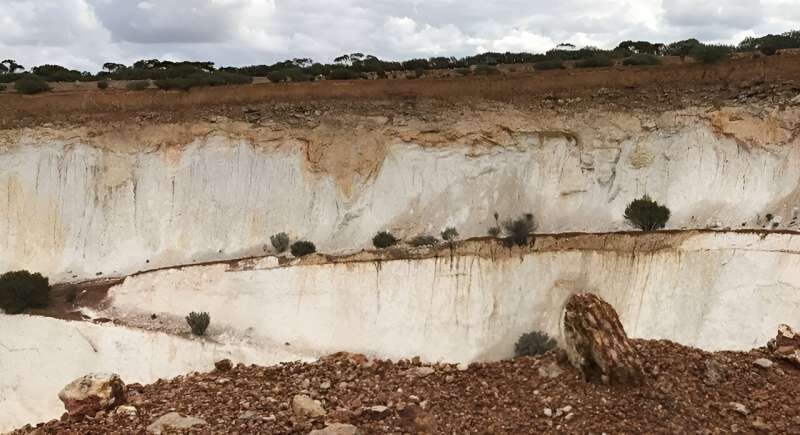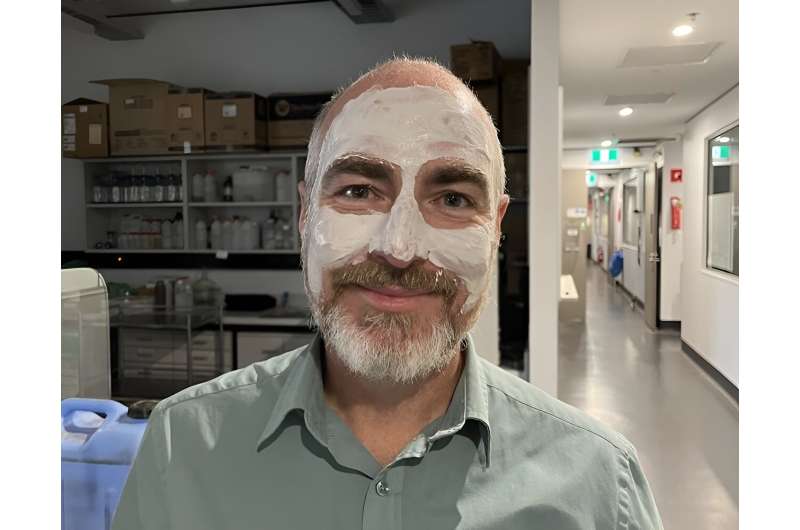This article has been reviewed according to Science X's editorial process and policies. Editors have highlighted the following attributes while ensuring the content's credibility:
fact-checked
trusted source
proofread
Kaolinite clay makes a great face mask, but it may hold key to location of gold and critical minerals

Clay. It's been used for centuries to make pottery, decorative beads, and earthen houses. And it has a firm spot in many beauty regimes.
Aboriginal and Torres Strait Islander peoples use it in traditional medicines, and as a natural pigment and for body paint.
Your kids may even be having fun with it during the school holidays.
But clay could also be used to discover gold and the critical minerals so vital for the energy transformation.
Kaolinite, the king of clays
Kaolinite is a white clay mineral. It can take on other hues depending on what other elements it binds with. For example, mixed with iron oxides it becomes pink.
It has a layered structure of silica and alumina giving it a soft and crumbly texture. It is also the most common clay found in Australia, with deposits found in all mainland states.
Uncovering Australian minerals
Australia is an ancient continent.
The land surface has been weathered over millennia, creating a thick blanket of broken-down rocks, sands and clays on the surface, called regolith. The term comes from Greek words, rhegos meaning blanket and lithos meaning rock.
The regolith makes it difficult to see what mineral ore bodies lie beneath the surface. It also means that a lot of rock and soils on the surface have traveled long distances from where they were originally formed.
That's why mineral explorers need new ways to find clues to hidden treasure.

The clay detective
WA-based Research Scientist, Dr. Ryan Noble, is an expert in mineral exploration techniques. He believes the amazing adsorbing powers of kaolinite might hold clues for companies on the hunt for valuable deposits. "As rocks weather over time many turn into kaolinite. This is why kaolinite is so widespread across Australia," Ryan says.
But it is a special property of the clay that makes it great for mineral discovery.
"I look at ultrafine particles of kaolinite. These are less than two microns in size. Even though these are very tiny particles they have a relatively large surface to adsorb metals from the environment," Ryan says. "The clay particles trap and grab metals like gold, nickel and platinum. We can then analyze these ultrafine particles in a lab for metals of interest."
Ryan and his team helped develop the UltraFine+ method. This method has successfully improved the detection of gold and other metals in areas with transported cover. It produces more reliable and more sensitive results than traditional soil sampling methods.
The big advantage of the technique is being able to explore more precisely and so reduce the environmental footprint of drilling.
"Overlaying UtraFine+ results over a surveyed region reveals areas which have naturally higher accumulation of metals. This minimizes the search area for minerals making it less invasive on the environment," Ryan says.
Provided by CSIRO





















